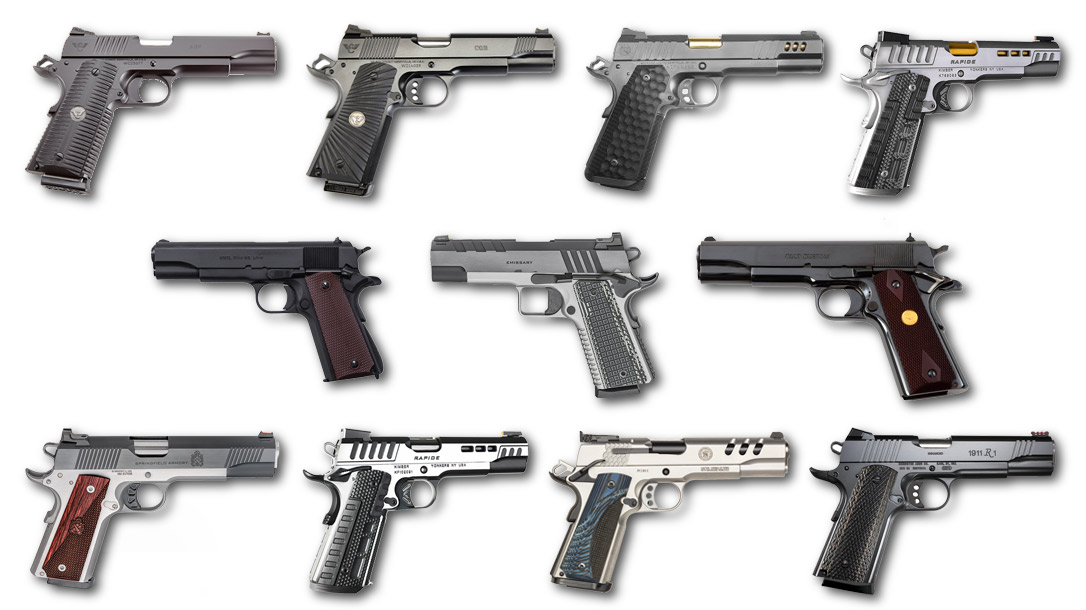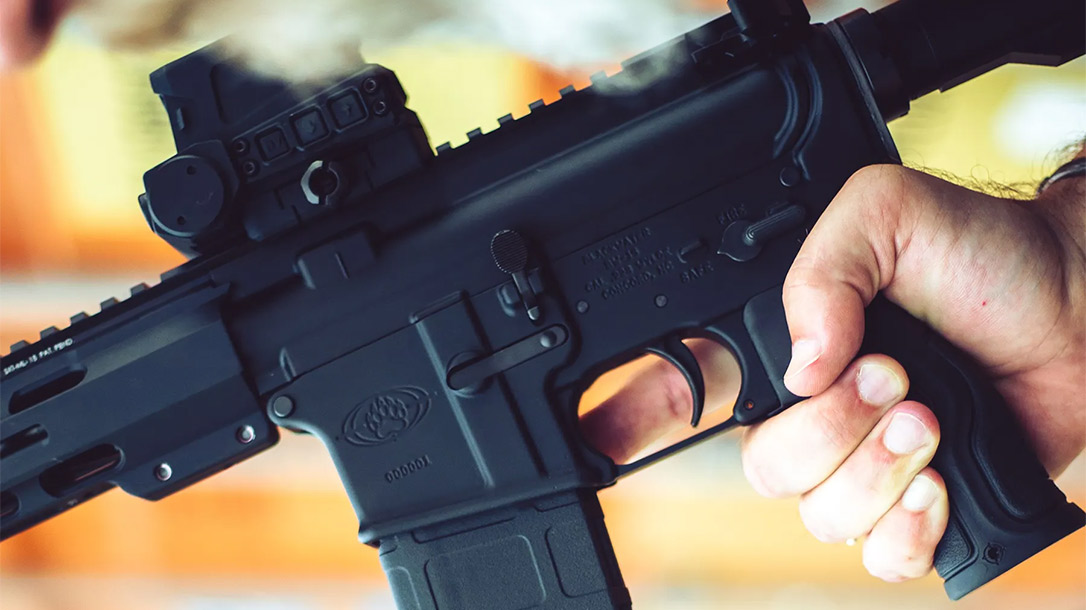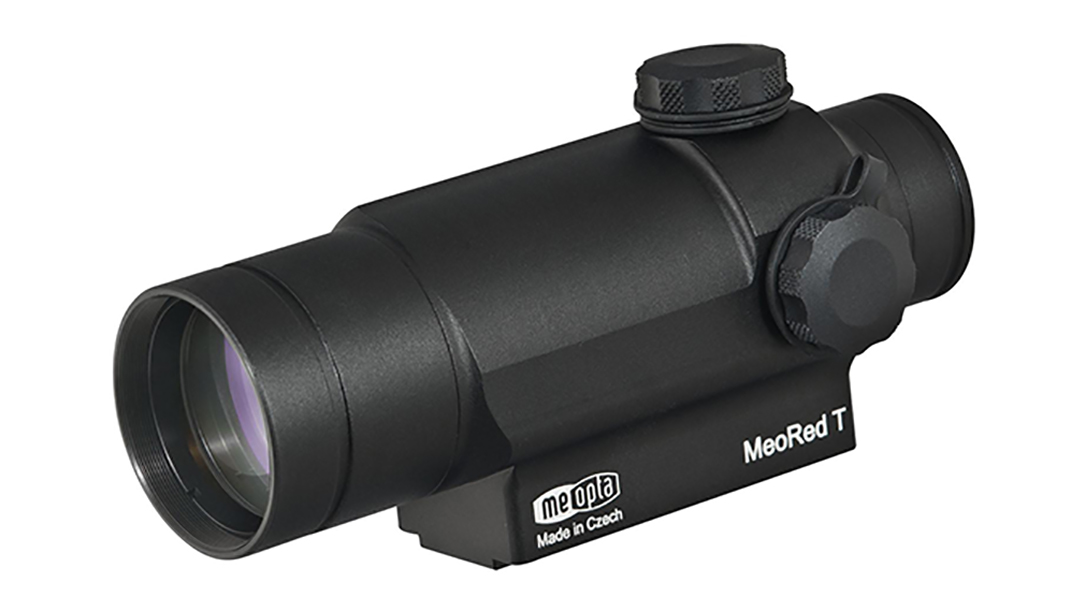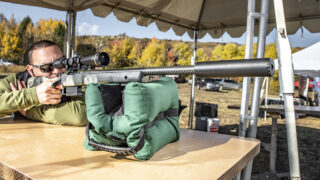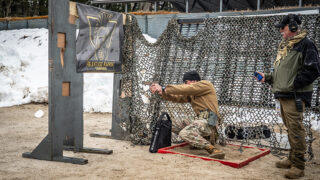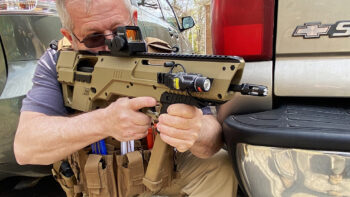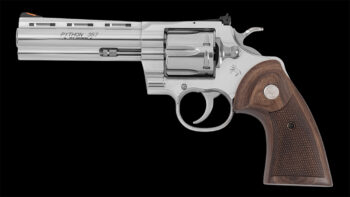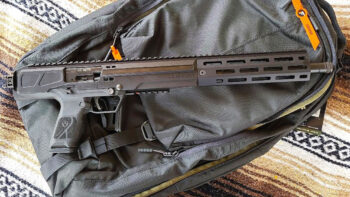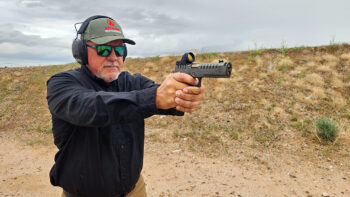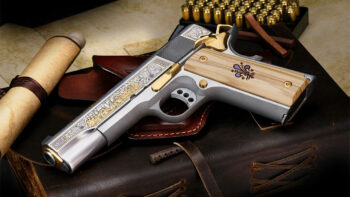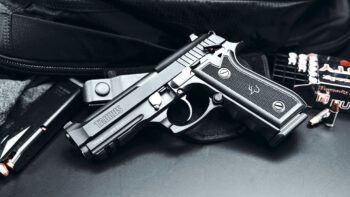It’s not very often that you see anything that just gets it right the first time. However, the 1911 design by John Moses Browning did just that. As a result, the 1911 is one of the most reproduced pistols on the market and some of the best companies around have thrown their hats into the ring. Of course, depending on which model you go with, price points will vary dramatically.

10 Tips to Stay Within the Law When Traveling with Firearms
11 of the Best 1911 Pistols for 2022
The 1911 design originated from a need for a self-loading, semi-automatic pistol to replace the service revolvers of the time. Likewise, the Army was interested in replacing the .38 with the higher power .45 ACP. Although many different firearm manufacturers around the world fought for the contract, it was the Colt/Browning gun that outperformed.
Fast forward to today, when the 1911 is still going strong and many manufacturers have their own take on the classic. Due to its narrow profile, it is still a popular concealed carry pistol throughout the United States.
However, some companies have opted to make it even more CCW-friendly with smaller frame versions. Likewise, in recent years, the single action has become available in multiple different calibers such as 10mm, 9mm, or 45 ACP. Not to mention the occasional variations in .22LR, .380 ACP, .38 Super and .40 S&W.
For this roundup we went with more traditional full size 1911’s chambered in .45 ACP, in homage to the original. There are options in every price range because it’s nice to look at eye candy, but also nice to see things we can afford.
Colt Royal Blue 1911 Classic
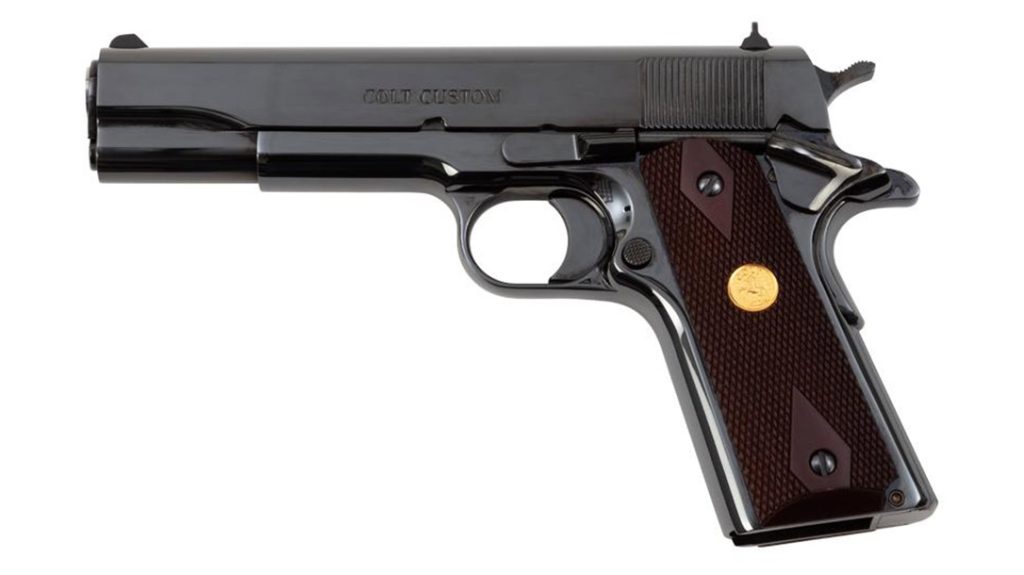
What kind of list would this be if it didn’t include a Colt? It would be damn near heresy. The Colt Royal Blue 1911 Classic is a tribute to the Government Model pistols of the past. Keeping true to its name, it is a throwback to the original.
Featuring the Series 70 firing system coupled with a National Match Barrel and spurred hammer it’s ready for CCW or competition. Colt Custom rollmark and rosewood grips with inlaid gold Rampant Colt medallion highlight the high polish royal blue finish.
Chambered in .45 ACP, the Royal Blue Classic has a 7+1 capacity.
MSRP: $1,499.00
For more information, please visit Colt.com.
Nighthawk Custom the President
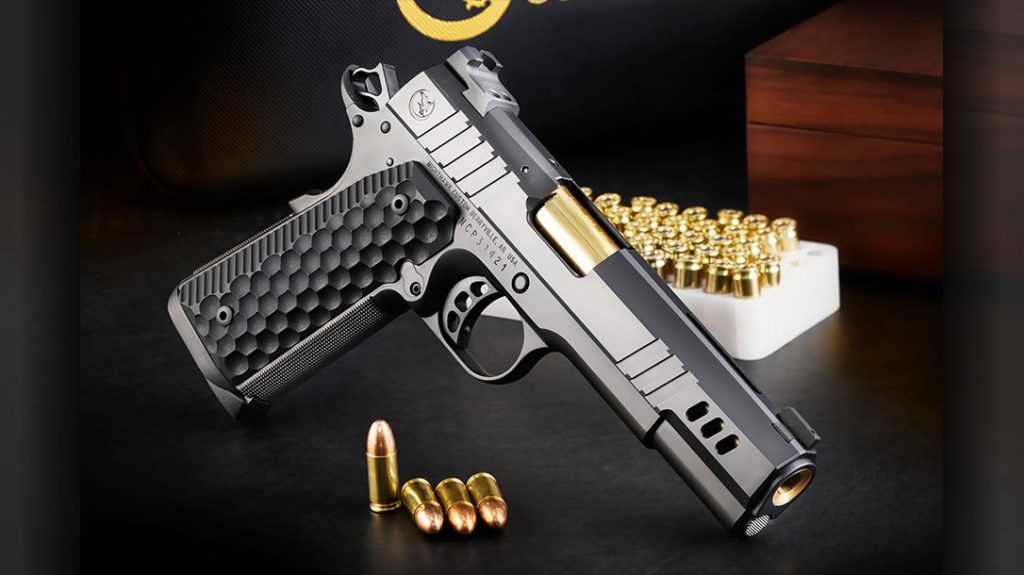
The Nighthawk Custom President is a beautiful example of form and function. This range-ready pistol features a forged, match-grade Gold Titanium Nitride barrel, visible through the slide-lightening cuts and ejection port. The slide includes both forward and rear cocking serrations, for enhanced manipulation.
Providing the interface between man and steel are highly textured Railscale G10 grips. The grip comprises a One-piece mainspring housing/magwell. A 14k solid gold bead front sight really sets off the overall tone of the pistol when viewed through the Heinie Ledge solid black rear sight.
Chambered in either 9mm or .45 ACP, the President has a capacity of 10+1.
MSRP: $4,599.00
For more information, please visit NighthawkCustom.com.
Wilson Combat ACP
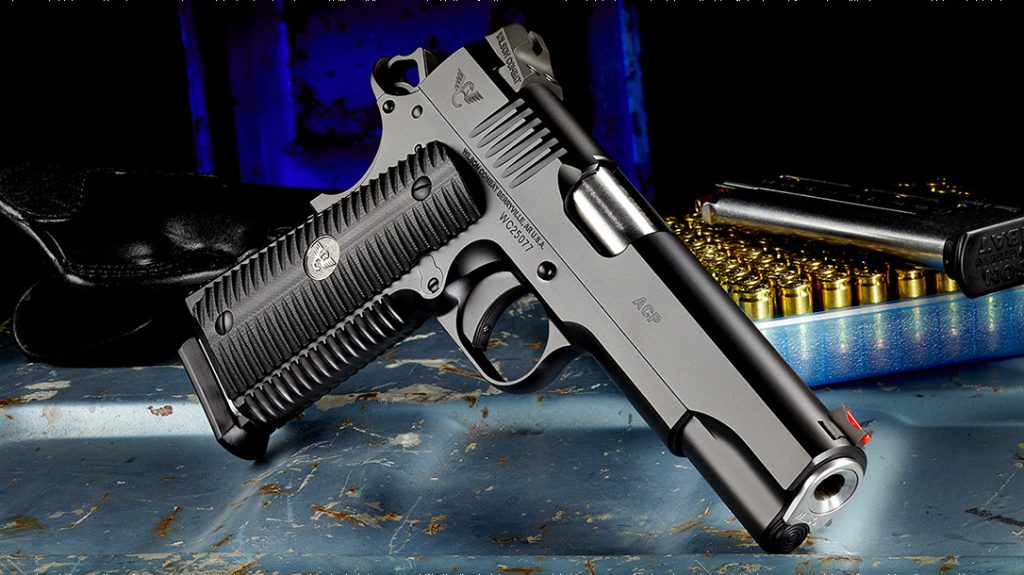
Wilson Combat has a reputation for hard use, combat firearms that look great to boot. The ACP is built utilizing the company’s highest quality parts, ensuring long-term dependability. Featuring a full-size, forged carbon frame, the grips have the Eagle Claw grip pattern for excellent retention. Likewise, the forged slide features Eagle Claw slide serrations for enhanced manipulation and matching aesthetics with the grip.
Riding atop the slide is the Wilson Combat Battlesight with red fiber optic front sight. The hardware includes the Tactical Bullet Proof thumb safety and Bullet Proof magazine release.
Chambered in either 9mm or .45 ACP, the ACP has a capacity of 8+1 (.45 ACP) and 10+1 (9mm).
MSRP: $2,725.00 – $2,825.00 (depending on model)
For more information, please visit WilsonCombat.com.
Wilson Combat CQB
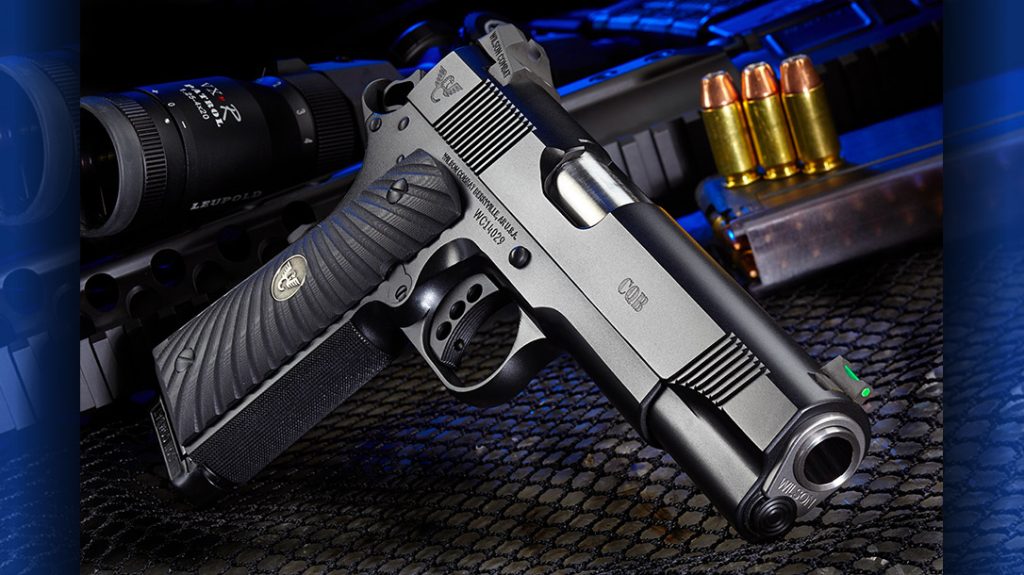
The CQB is Wilson Combat’s most popular model. Featuring a very clean, straightforward, traditional design, the CQB is all business. Building on a full-size carbon steel frame, the CQB incudes G10 Starburst grips for ideal retention while firing. Likewise, tactical reloads are made easier by the contoured magazine well.
The High-Ride Bullet Proof Beavertail Grip Safety works with the Bullet proof Thumb Safety for added security. A crisp, 3.5 – 4.5-pound trigger pull sends round downrange via the 5-inch stainless match-grade barrel.
Chambered in .45 ACP, 10mm, .40 S&W, .38 Super, or 9mm, it has a capacity of 8+1 in .45 ACP.
MSRP: $3,115 – $3,215.00 (depending on model)
For more information, please visit WilsonCombat.com.
Springfield Armory Ronin 1911
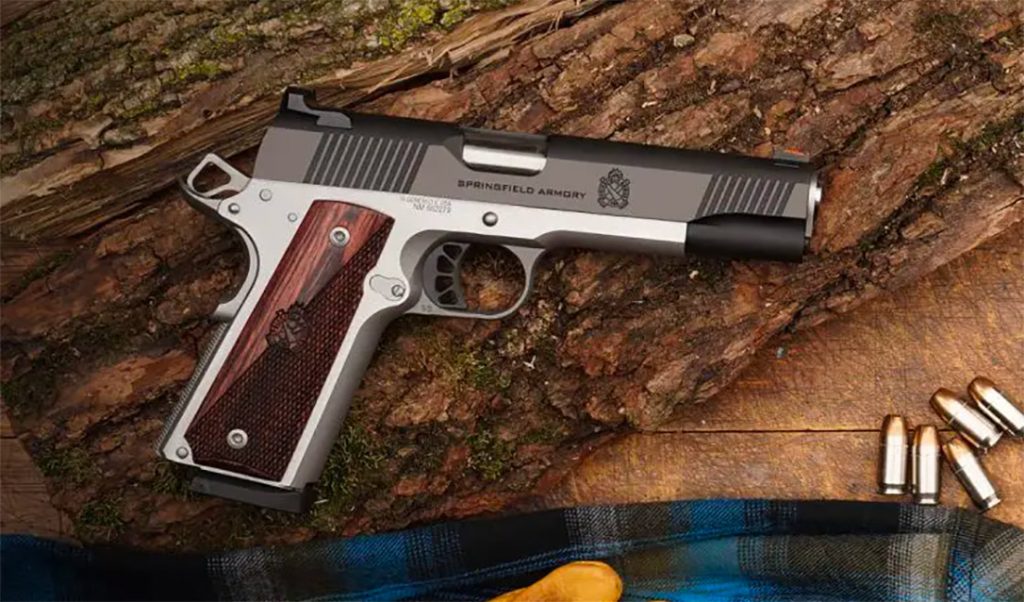
Springfield has been in the 1911 business from the early stages and it is clear that it is only getting better. The Ronin 1911 is a perfect example of that. Featuring a forged frame and slide, the Ronin is the model of strength and durability. Hot salt bluing on the slide coupled with hybrid smooth/checkered Crossed Cannon wooden grips set off the overall aesthetics.
The slide houses a 5-inch precision hammer-forged barrel for superior accuracy. Riding atop the slide is a tactical rear sight coupled with a fiber optic front sight for low light target acquisition. Designed for performance, rounds are sent downrange via the streamlined and skeletonized Gen 2 Speed Trigger. When not shooting, the Ronin maintains safety via a beavertail grip safety and thumb safety.
Chambered in 9mm, 10mm, and .45 ACP, the Ronin has a capacity of 8+1 (10mm and .45 ACP) and 9+1 (9mm).
MSRP: $899.00
For more information, please visit Springfield-Armory.com.
Springfield 1911 Emissary 4.25
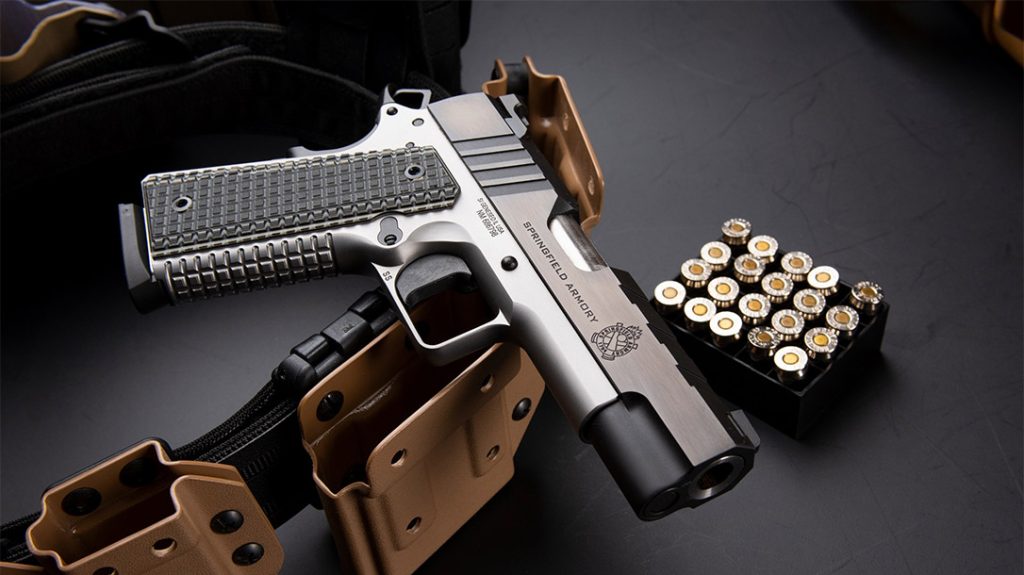
With a slightly more compact form than the traditional 1911, the Emissary 4.25 is the company’s latest 1911 offering. Featuring a more EDC-friendly size, the Emissary features a Tri-Top slide with front and rear cocking serrations. Likewise, flat top slide serrations help diffuse light and reduce glare.
The hot salt blued slide houses the heavy profile 4.25-inch forged stainless steel bull barrel for maximum accuracy. Similarly, grenade-pattern checkering on the VZ Thin-Line G10 grips and front and rear straps ensure full control while firing. A tritium & luminescent front sight pairs with the Tactical Rack U-Dot rear sight for fast target acquisition.
Chambered in .45 ACP, the Emissary has a capacity of 8+1.
MSRP: $1,349.00
For more information, please visit Springfield-Armory.com.
Kimber RAPIDE (Dawn)
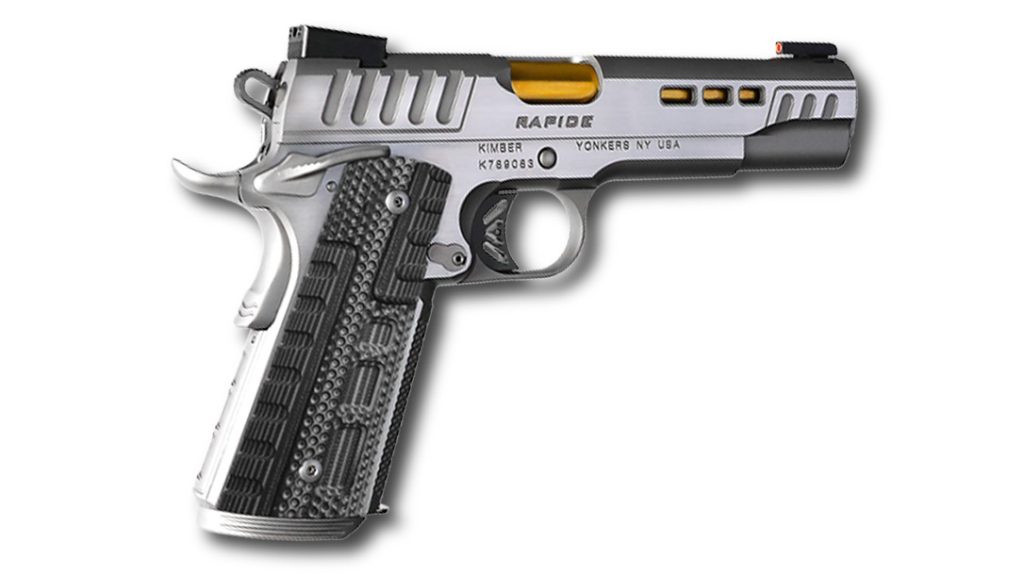
The Kimber RAPIDE (Dawn) is a unique take on the 1911. Constructed of stainless steel, the frame features the Kimpro II Silver finish, set off by the brushed stainless and Kimpro II finish of the slide. Housed within the slide is a stainless steel, match-grade barrel with a gold finish, beautifully showcased through the slide cuts and ejection port.
The slide carries Tru-Glo TFX Pro Day Night front and rear sights. Additionally, stepped front and rear cocking serrations improve manipulation. Likewise, the textured G10 grips and front strap stippling provide extra grip confidence while firing. Safety is provided via a beavertail grip safety and ambidextrous thumb safety.
Chambered in 9mm, 10mm, or .45 ACP, the RAPIDE (Dawn) has a capacity of 7+1 (.45 ACP), 8+1 (10mm), and 9+1 (9mm).
MSRP: $1,713.00 – $1,733.00 (depending on model)
For more information, please visit KimberAmerica.com.
Kimber RAPIDE (Scorpius)
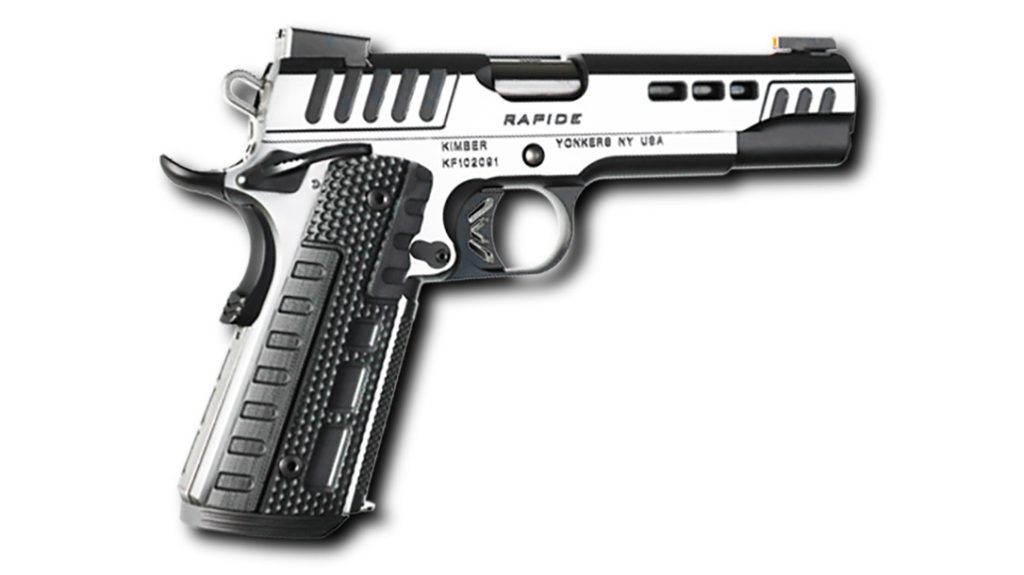
The Kimber RAPIDE (Scorpius) is essentially a larger version of the (Dawn) with some slight variations. Like the (Dawn) the (Scorpius) is constructed of stainless steel. However, both the frame and slide feature the Kimpro II black finish with brush polished flats. The slide houses a 5-inch stainless steel match-grade barrel with black DLC finish and match-grade bushing.
The interface consists of Black RAPIDE G10 grips and front strap stippling. Rounds are sent downrange via the V-Cut aluminum trigger with 4.0 – 5.0-pound factory setting. The slide features the stepped front and rear cocking serrations and Tru-Glo TFX Pro Day Night w/Orange ring front sights.
Chambered in 9mm, 10mm, or .45 ACP, the RAPIDE (Dawn) has a capacity of 7+1 (.45 ACP), 8+1 (10mm), and 9+1 (9mm).
MSRP: $1,713.00 – $1,733.00 (depending on model)
For more information, please visit KimberAmerica.com.
Smith & Wesson Performance Center Model SW1911 (Ballistic Magazine’s Best Finalist 2021)
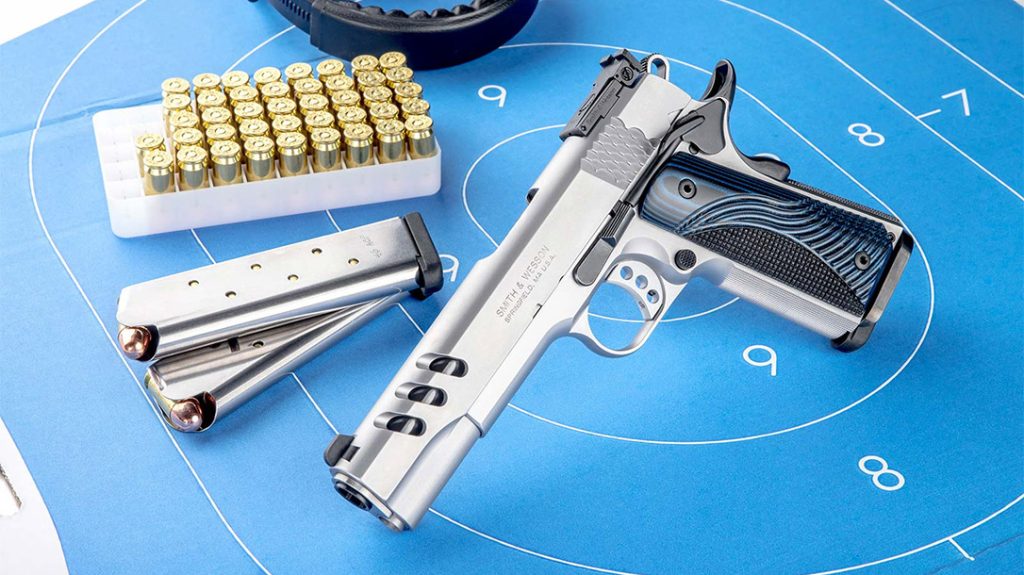
If it is a Smith & Wesson Performance Center Edition you know it is going to be good. Constructed of stainless steel, the SW1911 features the Performance Center action job for competition-oriented shooters. Everything about it is hand done, from the hand-cut chamber and hand-polished feed ramp to the hand-tuned action job and hand-lapped frame and slide rails.
The 3.5 – 4-pound match-grade trigger features an over travel stop and works with the speed configuration hammer. A match-grade throated barrel and Briley spherical bushing help to improve accuracy. The grip consists of blue G10 custom wood grips with beavertail grip safety and ambidextrous thumb safety.
Chambered in .45 ACP, the Performance Center SW1911 has a capacity of 8+1.
MSRP: $1,649.00
For more information, please visit Smith-Wesson.com.
Remington 1911 R1 Enhanced
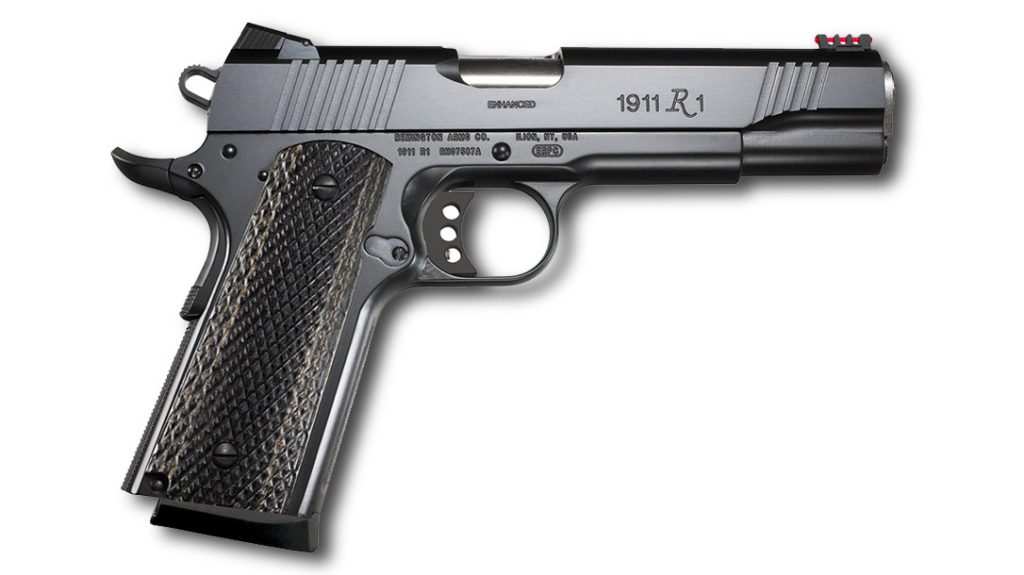
Remington is a name that needs no introduction, and its contribution to the 1911, with the R1 Enhanced, follows suit. Building on a stainless-steel frame, the R1 Enhanced has tactical enhancements. A 5-inch match-grade barrel and bushing provide for enhanced accuracy and dependability. Meanwhile, forward and rear cocking serrations allow for slide manipulation even under duress.
The extended performance trigger is adjustable for overtravel and features a three-hole design. A flat mainspring housing features checkering at 20 LPI, working with the textured custom grips with thumb groove and ambi cut. The checkered beavertail grip safety works with the enhanced wide thumb safety for safe handling.
Chambered in .45 ACP, the R1 Enhanced has a capacity of 8+1.
MSRP: $1,135.00 (It is currently not being produced but production is set to resume in late summer 2022)
For more information, please visit RemArms.com.
Auto Ordnance 1911A1
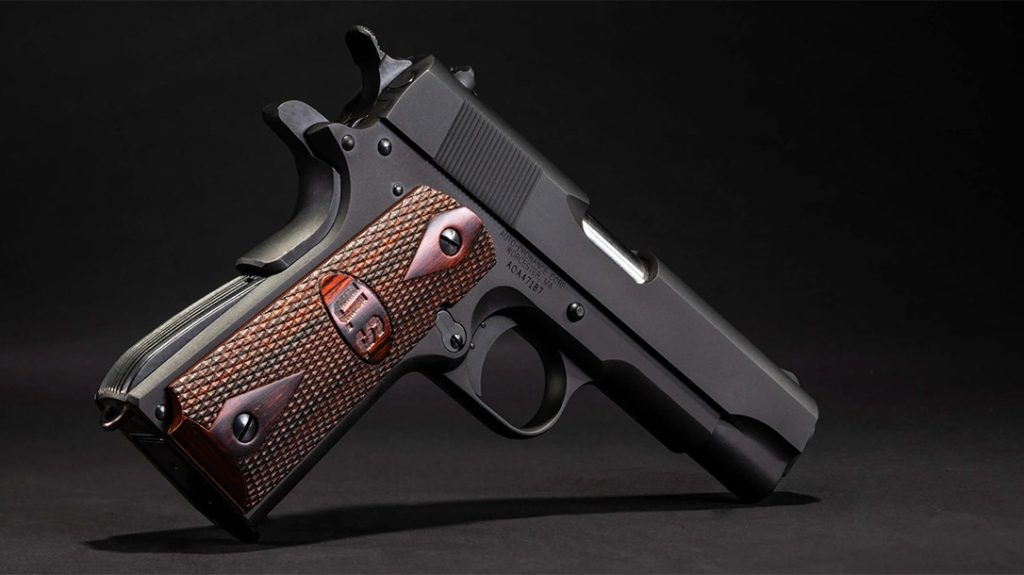
This is how you get down and dirty with a 1911 meant for business. The Auto Ordnance 1911A1 is a no-frills workhorse with design stylings reminiscent of the original Army model. Incorporating GI specs and features, the 1911A1 replicates the WWII model in both form and function.
The carbon steel frame and slide feature a matte black finish to reduce glare. The carbon steel slide, sear, and disconnector are all machined from solid bar stock, and heat-treated for durability. Atop the slide is a blade front sight and rear drift sight, adjustable for windage. Although it ships standard with brown plastic grips, checkered wood grips with U.S. Logo are available.
MSRP: $549.99 – $779.55 (depending on options)
For more information, please visit Auto-Ordnance.com.










